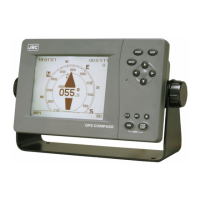2-3
・
Be careful not to damage the equipment during loading or installation.
・
Do not lift the sensor by the equipment cabling.
1.
It is recommended that the sensor be installed midway on a strong pole or mast.
In order to minimize vibration and improve maintainability, the sensor should not be
mounted at an excessive height.
2.
Use a sufficiently thick metal base for the sensor mount, and any necessary additional
reinforcing materials, to reduce vibration and shock as much as possible. Use stays or
wires on the pole or mast on which the mount is connected in order to further reduce
vibration or shock to the sensor.
Ensure that the mounting surface is as flat as possible. Do not use rubber, resin, or
other flexible materials in order to flatten the mounting surface, as this may result in
reduced resonance frequency and increased vibration. It may also cause mounting bolt
loosening of the material when degraded.
3.
Use appropriate bolts for the sensor, and tighten all bolts equally. The length of the
mounting bolts varys based on the thickness of the mount, but select bolts of such length
that the amount extending past the nut is twice the thickness of the nut.
Some initial loosening may occur after tightening. Perform a second bolt tightening
some time after the initial tightening.
After installation, check the tightness of the installation bolts periodically. It is especially
important to check the bolt tightness after traveling in inclement weather, regardless of
how much time has passed since the last check. Continued use of the same bolts may
result in decreased strength, bolt degradation, or bolt breakage. If this occurs, replace
both the bolt and the nut with a new bolt and nut. If bolt loosening occurs frequently,
please consult with a JRC technician.
4.
Install the sensor as horizontally to the ship as possible. If it is tilted largely, direction
accuracy may be degraded.
Attention

